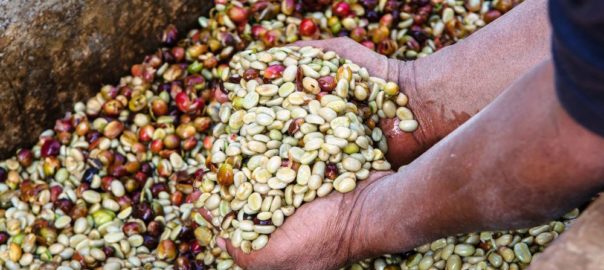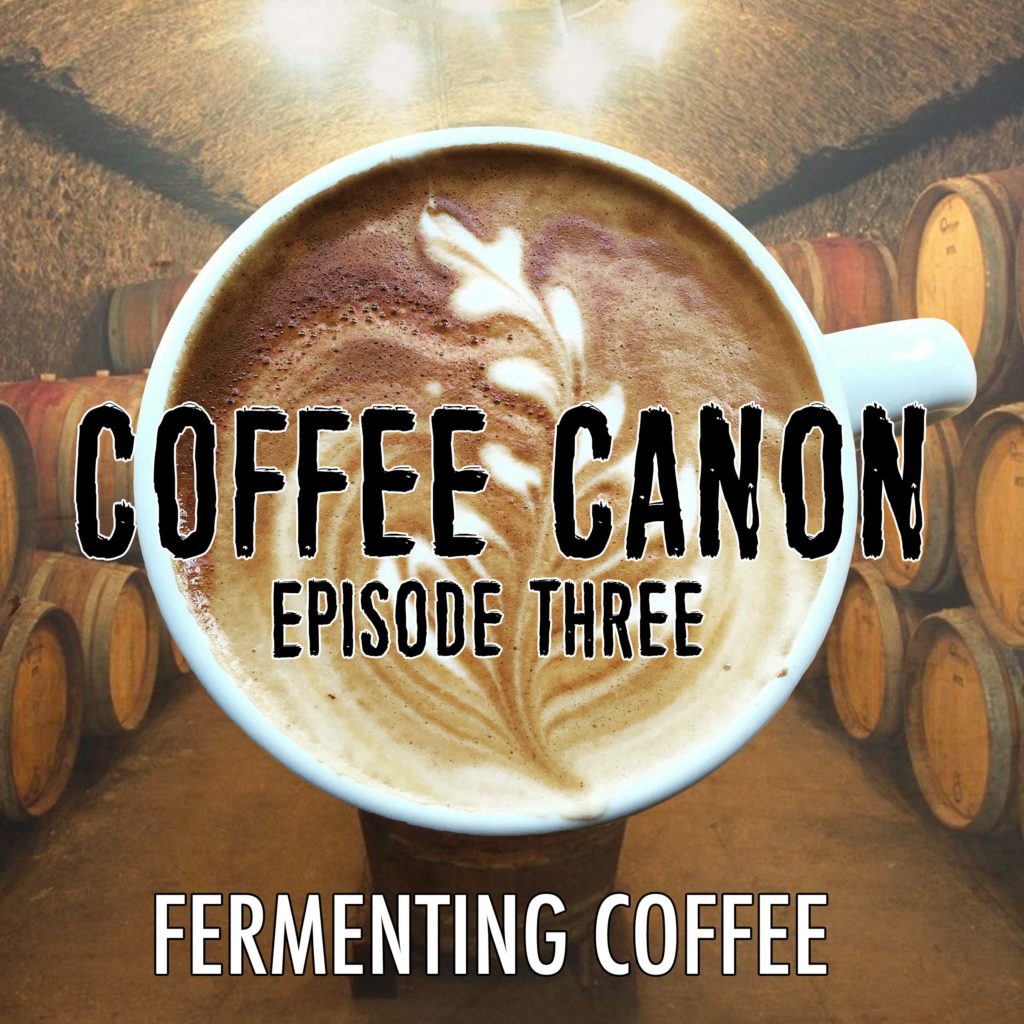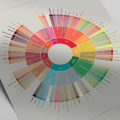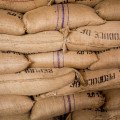For thousands of years humans have used fermentation to preserve food, leaven bread, and brew alcohol. In 19th century Belgium lambic beers were brewed using the yeasts and bacteria naturally found in the air. Fermentation is an integral part of the way we process coffee as well, but because of function – not taste. What can history teach us about fermentation, and how can we use that to create even better tasting coffee?
This week’s episode relied heavily on the article, “Looking beyond Origin for flavor diversity” by Lucia Solis. Read the article here. Also, here’s a link to the BuzzFeed video referenced at the beginning of the show. Links to the rest of the sources for this episode are below. Also, don’t forget to sign up for the Coffee Canon email list. A special gift is going out this week to those on the list! You can sign up here.
Colin
Episode Three Sources:
- Coffee Fermentation
- “Looking beyond Origin for flavor diversity.” Where is Scott Rao?, by Lucia Solis. Link: https://www.scottrao.com/blog/2017/10/23/looking-beyond-origin-for-flavor-diversity
- “A long overdue report on some coffee fermentation experiments.” Pax Coffea, by Peter Giuliano. Link: http://petergiuliano.tumblr.com/post/29438469954/a-long-overdue-report-on-some-coffee-fermentation
- “How Does Fermentation Affect Coffee Flavor Development?” Perfect Daily Grind, by Tanya Newton. Link: https://www.perfectdailygrind.com/2017/07/fermentation-affect-coffee-flavour-development/
- “Beer and Wine are Fermented – So Is Coffee!” Hula Daddy Kona Coffee Link: http://www.huladaddy.com/articles/beer-and-wine-are-fermented-so-is-coffee.htm
- Beer Fermentation
- “A Brief History of Lambic in Belgium.” https://www.lambic.info/A_Brief_History_of_Lambic_in_Belgium
- “Geuze & Kriek: The Secret of Lambic Beer” by Jef Van den Steen. https://www.lambic.info/Books#Geuze_.26_Kriek:_The_Secret_of_Lambic_Beer
- Coffee Processing
- “What on Earth is Honey Process?” Seattle Coffee Works Blog, by Sebastian Simsch. Link: http://blog.seattlecoffeeworks.com/roastery/earth-honey-process/
- “Washed, Natural, Honey: Coffee Processing 101” Perfect Daily Grind, by R. Turp. Link: https://www.perfectdailygrind.com/2016/07/washed-natural-honey-coffee-processing-101/
- Wikipedia
- Music
- Dana Boulé, Blue Piano, “Waves” FreeMusicArchive.org
- Podington Bear, Passages, “Aim Is True” FreeMusicArchive.org
- Podington Bear, Passages, “Window Shopping” FreeMusicArchive.org
Episode Three Transcript:
About three weeks ago BuzzFeed posted a video called “$1 Coffee Vs. $914 Coffee.” This video is similar to others in this format – a couple guys go to Japan and try three different coffees at different price points. The first costs 100 Yen (or about $1). The second is a specialty pour-over that goes for 400 Yen (or about $4). The final cup is from a small coffee shop in Osaka, Japan called “THE MUNCH.” The drink is brewed using beans that have been barrel-aged for 20 years, and it costs 100,000 Yen, or about $914. The video is worth a watch, if only because watching these guys’ facial expressions after trying the barrel-aged coffee is as close as most of us will ever come to enjoying the drink ourselves. According to them, it was incredibly delicious and completely one-of-a-kind.
But the video got me thinking – what’s the deal with barrel-aged coffee? Is this the newest gimmick on the block, or is there actually something there?
A couple days after BuzzFeed posted the video, well known coffee expert and author Scott Rao helped answer my questions. He posted an article on his blog called “Looking beyond Origin for flavor diversity.” The article is actually by Lucia Solis, a fermentation expert who started as a winemaker. Now, Lucia is a coffee-fermentation designer.
In the opening sentence of the post, Lucia writes that her work comes down to one simple truth: fermentation creates chemical compounds with sensory characteristics. She goes on to say that tiny microbes like yeast and bacteria have the potential to impact flavor in a big way – good or bad. And they’re impacting our coffee now whether we like it or not.
I’m Colin Mansfield, and welcome to Coffee Canon.
In this episode I’m going to be discussing fermentation and its application to coffee, both historically and currently. I’m no biologist or zymologist – that’s the science of fermentation for the folks at home keeping score – so keep in mind that everything I discuss here will be based on a source I’ve read or interpreted. As always, a list of my sources can be found both in the show notes and the corresponding post on BoiseCoffee.org.
So what is fermentation? Let’s take a quick crash-course in biochemistry, starting with metabolism. Metabolism is the set of life-sustaining chemical transformations within the cells of organisms. Metabolic systems aren’t the same across all of life, of course – some organisms require substances that might kill other organisms. For example, hydrogen sulfide is used as a nutrient by some unicellular organisms, but it’s completely poisonous to animals.
Fermentation is simply a metabolic process that consumes sugar in the absence of oxygen. It produces organic acids, gases, or alcohol, and it occurs in yeast and bacteria. Fermentation has been used by humans in food products for likely hundreds of thousands of years with a few key goals: preservation, leavening, and, of course, making alcohol. Pickles, sourdough bread, kimchi, yogurt, sauerkraut, beer, wine, and hard cider are just a handful of the great things that fermentation has allowed us to produce.
Beer – in particular – is an interesting case study in how fermentation went from an uncontrolled necessity to a meticulously calculated flavor-enhancer. Beer has changed quite a bit over time, and most of the brews you can pick up at a supermarket today are very dissimilar from their ancient counterparts in major ways.
A couple years ago my wife and I got the chance to visit Belgium and while there, to check out Cantillon Brewery. Cantillon brews lambic beers and has since 1900 when the brewery was founded. But the lambic style of brewing goes back way further than that – by some accounts it was being experimented with as early as 1400. How is lambic brewing different from modern brewing? Fermentation. It’s fermented through exposure to wild yeasts and bacteria native to the Zenne valley – that’s the area around the portion of Brussels that the Zenne river flows through. So – what’s that look like? Well without going too deep into all the processes associated with beer brewing, basically, brewers would take what’s known as the wort (essentially mashed grain steeped in hot water) and let it sit in a giant circular shallow vat. This would expose the wort to all the natural bacteria and yeast floating around in the air. As it fermented, it took on the unique characteristics of microorganisms found in that region – both tasty, and not so tasty.
Modern brewing techniques ferment through exposure to carefully cultivated strains of brewer’s yeast. We do this today because modern brewers are looking for specific flavors only brought out by specific strains of bacteria and yeasts. Back in the 15th, 16th, 17th, 18th, 19th, and most of the 20th century, brewers didn’t have the option of picking out their yeasts and bacteria. So, they experimented.
In the 17th and 18th centuries brewers in Belgium were generally considered artisans and were mainly part of the agrarian community. This meant that many of the brewers were farmers themselves, or had close ties to the farmers in the community who supplied the raw materials needed to make beer. According to one author, in 1839 the area in which lambic could legally be brewed was limited to Brussels and the immediately surrounding area – and until 1860 foreign beers, whether imported or domestically produced, were non-existent in Brussels. Why? Well, brewers believed that their beer had a unique taste that could only be created because of the unique micro flora only found in Brussels. Fermentation, they believed, made their product better than anyone else’s. My wife and I agree – the lambic we tried in Brussels was incredible.
But not all regions are created equal, and not all natural yeasts and bacteria taste good. This is one reason why the traditional lambic style isn’t widely brewed today. Now that breweries can pick and choose which “good flavor” bacteria they want to introduce to their fermentation process, they can guarantee a consistent and repeatable flavor for their brews. Ultimately, the consumer wins – we know that when we pick up a 6-pack of brand-name beer from the supermarket it’s going to taste the same as the beer we bought last time, and the time before that.
So what does all this talk about fermentation mean for coffee, and why is it even relevant?
Well, before we answer that question, we first need to discuss how coffee is processed – and to get there, we need to take another step back and talk about how coffee is grown. So, let’s start at the beginning.
The word “coffee,” botanically speaking, is a broad term. It’s like saying “Rose;” just as there are different species of roses, there are different species of coffee. The two most well known coffee species are Coffea Arabica and Coffea canephora, usually referred to as Robusta. Robusta is actually more of a brand name given to Coffea canephora to highlight its strong – or robust – flavor. It was discovered in the Belgian Congo (what is now Zaire) in the late 19th century. At that time Coffea arabica, or just Arabica for short, was the only form of coffee being widely traded and sold. Robusta coffee plants, as it turned out, were able to grow and fruit at lower altitudes and higher temperatures than Arabica. Plus, they were more resistant to disease. This made them ideal to mass-produce and be grown in climates where Arabica couldn’t thrive. There’s just one problem with Robusta coffee – it tastes horrible. The beans have a woody, burnt-rubber quality with low acidity. On the plus side, Robusta beans generally have a higher caffeine content. These days, modern companies like Folgers use a certain percentage of Robusta beans blended in with Arabica beans to keep costs low, and caffeine high.
It’s interesting to note that on a genetic level Robusta and Arabica aren’t siblings or distant relatives: Robusta is actually the parent of Arabica. Some time in the distant past, likely in southern Sudan, Robusta crossed with another species called Coffea euginoides and together they produced Arabica. Coffea arabica spread from there, taking root in Ethiopia where it was first discovered by humans.
Growing and harvesting coffee plants demands a ton of care and patience. A newly planted seedling will take up to three years before it fruits properly. Also, coffee plants are extremely sensitive to temperature, moisture levels, sunlight exposure, soil composition, and altitude. A change in any of these factors can result in a drastically different end-product.
Most coffee trees have one main harvest per year, though some have a second smaller harvest. The first harvest is triggered by a prolonged period of rainfall, causing the trees to bloom in beautiful white blossom flowers with a strong scent, almost like jasmine. Arabica trees are able to self-polinate, though they are often assisted by insects like bees. After flowering, it takes up to nine months until the fruits are ready for harvest. Unfortunately, coffee cherries rarely ripen all at once – this puts growers in a tough place: they can choose to harvest all the fruits at once, then pick out the unripe and overripe fruit before processing, or they can pay pickers to make multiple passes of the same trees to get perfectly ripe cherries. The method used is usually determined by how much money and time the growers have. Regardless of the method, it’s rarely perfect. Some unripe cherries always make it into the processing stage and must be removed later on.
The coffee fruit is usually about the size of a small grape, but unlike grapes nearly the entire inside is dominated by the seed – or bean. All cherries start out green, and turn a bright shade of red or yellow as they ripen. Occasionally, trees that produce a red fruit and trees that produce a yellow fruit will cross breed and to produce an orange fruit. Trees that produce yellow fruit are sometimes avoided, as it can be harder to tell when the cherry is perfectly ripe and ready to be picked.
Coffee cherries essentially have five parts: the outer skin, the internal pulp, the parchment which surrounds the seed, the silverskin – a layer directly around the seed, and the seed itself. The seed is that portion that we’ll eventually roast and brew with, but let’s not get ahead of ourselves. First we have to peel off the other four layers. The method we choose to peel those layers off is called our “processing method” and, generally speaking, there are three main options: natural or dry, washed, and honey.
First, consider the natural processes, sometimes called the dry process. The natural process starts with removing unripe cherries that made it past the picking stage. That can either be done by hand, or using a flotation tank. If it’s done by hand, people will literally pick out the unripe green cherries from the batch before moving to the next step. But if we’re using a tank, all the coffee cherries are dumped into a massive water tank – because of buoyancy and science the ripe cherries sink to the bottom, and the unripe cherries float to the top. From there, the ripe cherries are spread out in a thin layer on brick patios or specially designed drying tables. The sun beats down on these coffee cherries, drying them until the outer husk of skin and fruit are able to be easily removed from the bean. While drying, the cherries have to be turned often, usually by people using some kind of rake, to keep them from molding or drying unevenly. It’s at this stage that the coffee cherries undergo fermentation as they’re dried in the fruit. This fermentation is what chemically helps the seed separate from the outer layers of the coffee fruit. Once the seeds are ready, they’re physically separated from the husk and fruit using a specifically designed machine. After the seeds are separated, they are rested for 30-60 days and are then mechanically hulled to remove any protective parchment left over.
The natural process is usually used in areas where access to water is severely limited. Because so many of the steps are manual, an entire batch can easily be ruined by one misstep. But when the beans are processed well, you get some amazing flavors like blueberry, strawberry, and tropical fruit. Bad batches taste like crap, literally. Manure, barnyard, and ferment are common tasting notes in poorly processed natural coffees.
Second, we’ve got the washed process. The washed process has the same goal and end-result in mind: strip coffee cherries down to the seed and ready them for shipment, roasting, and brewing. But the way this is accomplished is very different from the natural process. The washed process is more expensive, mostly because lots of water gets used, but the results tend to be more predictable than with the natural process.
First, the ripe cherries are separated using the tank buoyancy method mentioned earlier. From there, the outer skin and fruit flesh are stripped off of the coffee cherries by a mechanical depulper. Basically, it’s a machine that looks like kind of like a wood chipper, but whole beans go in at the top, and one side spits out the skin and flesh. The other side gives you mostly clean coffee seeds. Next, the coffee beans are placed in a clean trough of water where they are fermented to remove the remainder of the flesh. Coffee fruit flesh contains a lot of pectin that is firmly attached to the seed. Fermentation breaks it down, after which it gets washed away. The amount of time that fermentation takes depends on the amount of water used, the altitude, and the ambient temperature. If coffee is fermented too long, negative flavors can start to creep in, making this a crucial step. This part is key to today’s episode, and we’ll come back to talk about it later – but I want to highlight that the coffee is fermented simply to remove the flesh, nothing more.
The third main processing method is called the Honey Process. It’s most common in Central American countries. The mucilage of the coffee cherry is sticky and slimy, and because of this it’s sometimes called “honey.” During the Honey Process, coffee is dried with some or all of the mucilage remaining on the parchment encasing the seed. Coffee cherries are picked, sorted, and depulped (in the same ways we discussed for the natural and washed processes), and then they’re moved to drying patios for various periods of time. So, in essence, you’re combining some aspects of the washed process with some aspects of the natural process. One of the benefits of the Honey Process is that it doesn’t require as much water as the washed process, making it cheaper, but the results are more predictable than those from the natural process. Honey Processed beans go through little bits of fermentation over short periods of time while their mucilage dries. Coffees processed this way tend to have less acidity than either washed or natural processed coffees, but these bursts of fermentation do allow them to retain some acidity, which manifests itself as some bright flavors in the final product.
So you can see that already, the coffee industry utilizes fermentation in all three of the main coffee processing methods. But in every single one, it’s used as a means to an end – it’s a way to separate the coffee bean away from the outer layers of fruit.
Lucia Solis – the author of the article I mentioned at the beginning of the show – thinks that this is an incredibly narrow-minded way of viewing fermentation and its application with coffee. In the article, She says,
“We have only a handful of words to describe processing methods, for example washed, wet, honey, or natural, but each of these words can encompass very different and complex steps. The steps and time involved in what someone would describe as “washed” process vary wildly based on the climate, altitude, cultivar, ripeness, tank design and myriad other variables impacting fermentation kinetics. A coffee could spend anywhere from 8 hours to 72 hours in contact with the mucilage (fermenting) before it is washed. The words “fully washed” might not even mean that a coffee was fermented – but even if you know with certainty that it had been fermented, a coffee dry-fermented for 8 hours will likely taste different from one fermented underwater for 40 hours; or one fermented at 700 meters altitude (MASL) at 80°F versus 1500 MASL and 55°F; or one fermented in wood versus ceramic tanks. And so on.
Not only do the words we use to describe the process lack specificity, there is little known about the flavor effects of different processes’ steps or the microbes involved during those steps. This is the focus of my work.”
Later on she makes an incredibly salient point about how the coffee industry largely thinks about fermentation. “I finally realized few people understood the value of fermentation in the first place. I was using the word “fermentation” to describe a metabolic process whereby yeast and bacteria transform sugars into energy and flavor compounds. Yet the most common working definition for coffee purposes was ‘the step where the pulped coffee sits in a tank until the mucilage falls off’.”
“In the wine industry,” she goes on to say, “fermentation is extensively studied because it is a necessary step in winemaking: you can’t have wine without it. I noticed the coffee industry used the same word, but it had a very different meaning to almost everyone I talked to. I think the main reason for the discrepancy is that “fermentation” is optional for coffee; it’s just one method of isolating the seed from a cherry.”
If you have a minute, I recommend reading her article in its entirety. She’s makes some great points and has some neat hand-drawn diagrams to go with the text.
Ms. Solis’ overarching argument is this: traditionally in the coffee industry we’ve seen coffee fruit as having two “safe states” – that is places where the fruit is stable and not vulnerable to spoilage. These safe states are while the cherry is unpicked and still on the plant, and after the seed has been completely processed and is ready for roasting. In other words, the traditional thinking pattern is that the moment a coffee cherry is picked, it becomes vulnerable to damage and outside factors that may decrease its quality, and therefor its value. Another way of saying that is this: fermentation is unpredictable and “offers no opportunity for flavor enhancement, only risk.”
The new way of thinking about fermentation and coffee isn’t actually that new. It’s used in wine, beer, cheese, chocolate, and bread. This argument states that controlling and extending fermentation can actually yield positive, desirable flavor attributes while mitigating risk. The challenge is that you can’t leave this fermentation up to chance.
Which leads us back to where we started: a BuzzFeed video where an elderly Japanese man charges over $900 for a mug of 20-year-fermented coffee that tastes incredible. See the trick isn’t in the barrel, it’s in the microbes. It’s in the yeasts and bacteria that this man controlled for, yielding an enjoyable cup of coffee.
But using fermentation in tandem with coffee doesn’t have to take decades or cost hundreds of dollars per cup. Advocates say that coffee processors will see immediate results if they treat their beans like brew masters treat their beer – not leaving it up to environmental chance, but instead choosing the results before the brewing process even begins by selecting the right microbes.
But not everyone is convinced. Back in 2012 Peter Giuliano, the coffee expert we heard from in Episode 1 in regards to Japanese Iced Coffee, conducted a fermentation experiment of his own. He has a full write up on his blog, and he begins with a candid disclaimer: “this is not good science…the blinding was marginal, the controls weren’t perfect, we never repeated anything, and we had a ton of bias before even beginning the process. All the same, I feel that I learned something, and I want to share that with others.”
Essentially, Peter Giuliano’s experiment consisted of the same coffee fermented in five different yeasts or bacterias, as well as one control which was un-inoculated. Now, I’ll say this, even a cursory glance at Mr. Giuliano’s experiment makes it obvious that scientific rigor was not the priority here: they used unsealed five-gallon buckets to ferment in, meaning they were open to any other fermentation agents present in the natural environment. Also, the coffees were allowed to soak for only 24 hours, a length that, according to Peter, “is a normal, longish fermentation time.” While this may be true of current fermentation practices, it likely is not the optimal amount of time to generate new and interesting flavors in the coffee. The final thing that stuck out to me is there didn’t seem to be any rhyme or reason as to why the five fermentation agents were chosen. There may have been a purpose behind those specific combinations, but it wasn’t obvious and it seemed odd to simply pick five at random. To my knowledge there isn’t an establish list of bacterias and yeasts that are best suited for fermenting coffee, so I’m not sure what his selection criteria was for this experiment.
In any case, the results were inconclusive at best. While the buckets had a “dramatic difference in fermentation activity between yeasts” in the form of visual foaming, the actual cups of coffee that were brewed later had only slight flavor differences. In fact, the cupping scores that tasters attributed to all six coffees (control included) fell within the rating margin of error. “In other words, in this test, microbial treatments didn’t have a strong effect on the point score of the coffee.”
Peter does go on to say that the coffees were not unaffected by the treatments; they were different, especially in terms of fragrance and aroma. But the fundamental aspects that made this coffee what it was – the acidity, sweetness, body, aftertaste, cleanliness, etc – were unchanged. He says, “Microbes like yeasts and bacteria may be able to create subtle changes in the perception and articulation of these characteristics, but may not be able to change the coffee fundamentally.”
Respectfully, I disagree. And I think that in time, the rest of the coffee industry will as well. It seems that the main issue with discussing fermentation and its application in coffee is that, like Ms. Solis wrote, we treat it as a way to achieve a necessary physical state of the bean. We know that its happening, but we hand-wave it away as if it’s not already impacting the taste. But this isn’t the case for other craft foods and beverages where microbes play a significant role.
What would controlling for fermentation look like on a practical level for coffee processing facilities and farms? This is where it gets hairy – as we discussed earlier, processing methods vary widely from region to region. No two cities have the same resources and needs, nor do they have the same kinds of skilled employees. Like with water, some coffee processing techniques are birthed out of necessity rather than out of a desire to make the end product taste better. This is one way where coffee significantly differs from wine and beer. Both can be brewed in 1st world countries that have 1st world resources. Coffee, on the other hand, is almost entirely grown in poor countries. Likely, most farms wouldn’t have the resources to establish the kind of controlled environments that modern breweries use for controlled fermentation.
Ultimately, I don’t know if controlled fermentation is the type of thing the entire industry could shift towards. I think they should – Ms. Solis made a believer out of me – but I’m not convinced there’s an easy path for industry-wide changes to occur. I do, however, think that it’s the perfect opportunity for innovate specialty coffee shops to make better coffee. There are no good arguments against it, and fermentation’s history agrees with me. Please though, someone give me a heads up if a barista somewhere starts trying to implement hops into their roast in some way. Oh, who am I kidding, I’m sure that’s been done.
Thanks for listening to Coffee Canon. I’m your host, Colin Mansfield. If you’re enjoying the show, please do me a favor and give it a five-star rating on iTunes or the Apple Podcasts app – I’d really appreciate that. Also, feel free to drop my a line on email and let me know your thoughts about this episode – I’d love to continue the discussion. You can reach me at BoiseCoffee@gmail.com. Thanks for listening, have a great week and a Happy Thanksgiving next week.
Podcast: Play in new window | Download
Subscribe: Apple Podcasts | Android | Stitcher | RSS




